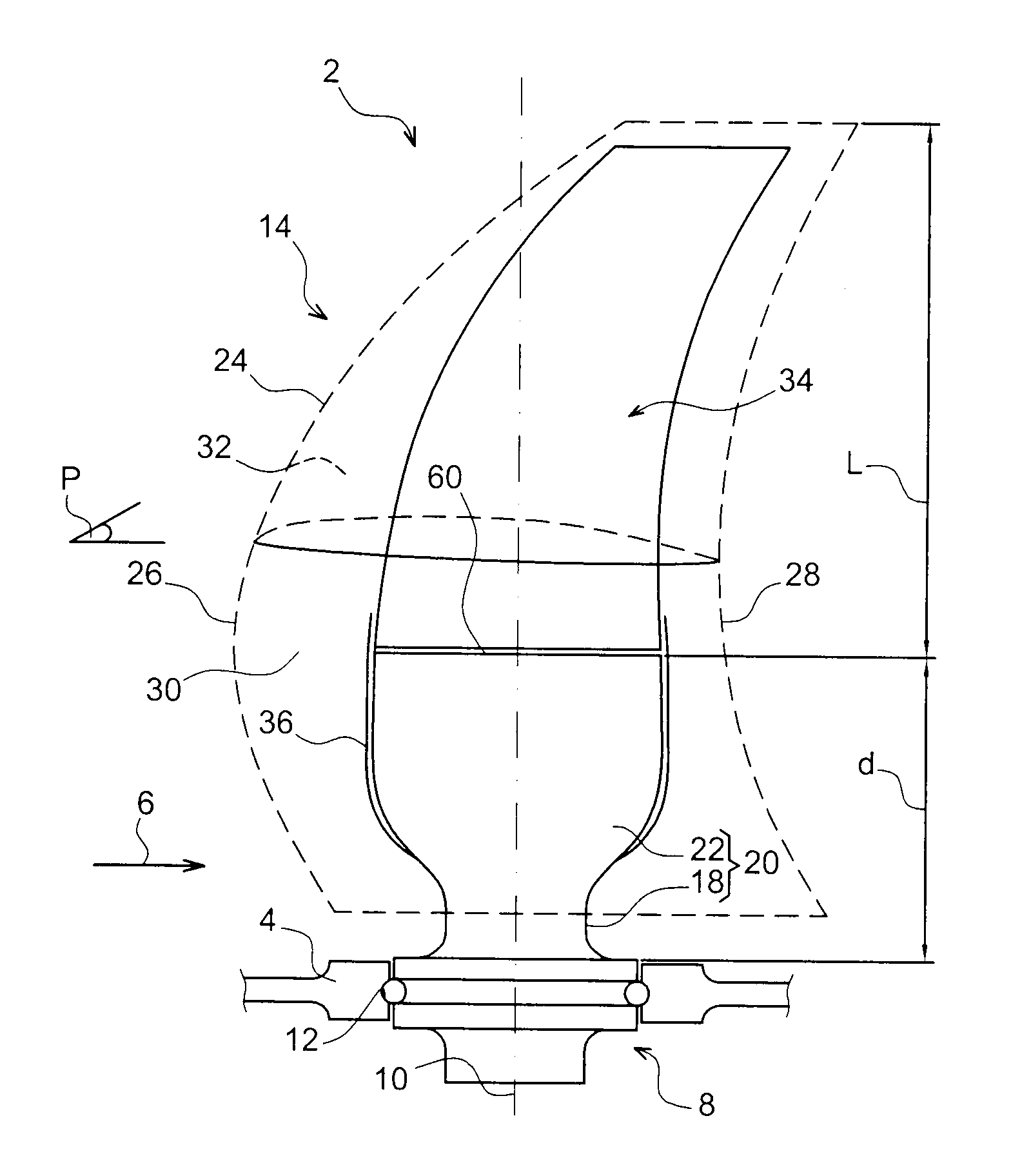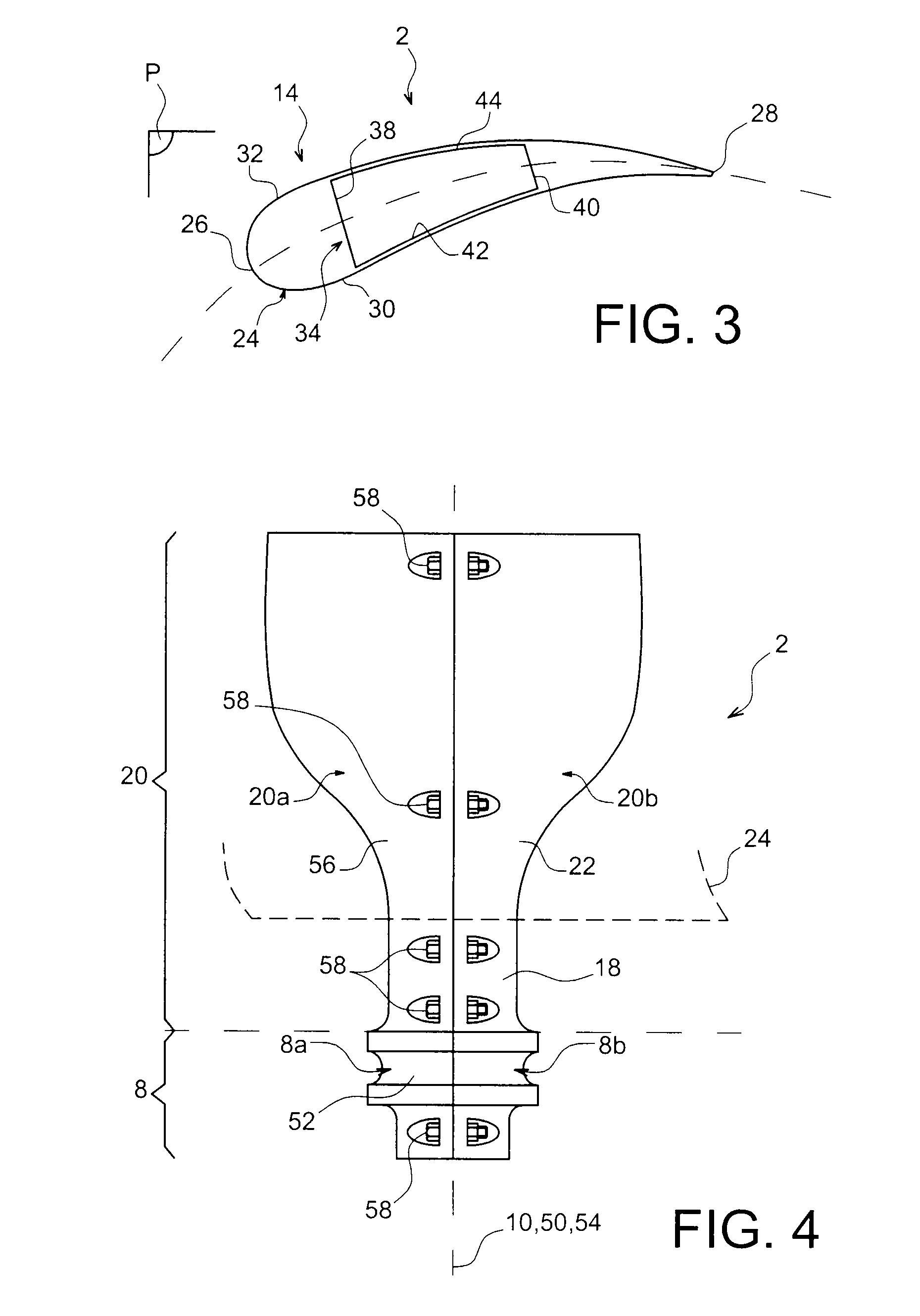Blade for turbomachine receiving part, comprising an airfoil part including a mechanical fuse
a technology of mechanical fuse and turbomachine, which is applied in the direction of liquid fuel engines, vessel construction, marine propulsion, etc., can solve the problems of kinetic energy that increases with the mass, and the consequences of such a shock supply on the integrity of the fuselage, so as to reduce the risk of blade loss
- Summary
- Abstract
- Description
- Claims
- Application Information
AI Technical Summary
Benefits of technology
Problems solved by technology
Method used
Image
Examples
Embodiment Construction
[0031]FIG. 1 shows a part of a receiving part of an open rotor type turbomachine, this receiving part corresponding to a propeller 1 equipped with a plurality of blades 2. For guidance, such a turbomachine comprises two counter rotating propellers, in a known manner, for example with the first fixed in rotation to a first free power turbine, and the second propeller fixed in rotation to a second free power turbine located on the downstream side of the first.
[0032]FIG. 2 shows one of the propeller blades 2 in the form of a first preferred embodiment of this invention. It is designed to be mounted free to rotate on a hub, this hub participating in delimiting the airstream 6. To achieve this, the blade 2 comprises a root 8 mounted rotating on the hub 4 about an axis 10, for example by means of a ball bearing system 12. In this way, it can continuously pivot during operation of the turbomachine to obtain the required incidence, by means of an appropriate variable pitch system (not shown...
PUM
 Login to View More
Login to View More Abstract
Description
Claims
Application Information
 Login to View More
Login to View More - R&D
- Intellectual Property
- Life Sciences
- Materials
- Tech Scout
- Unparalleled Data Quality
- Higher Quality Content
- 60% Fewer Hallucinations
Browse by: Latest US Patents, China's latest patents, Technical Efficacy Thesaurus, Application Domain, Technology Topic, Popular Technical Reports.
© 2025 PatSnap. All rights reserved.Legal|Privacy policy|Modern Slavery Act Transparency Statement|Sitemap|About US| Contact US: help@patsnap.com



